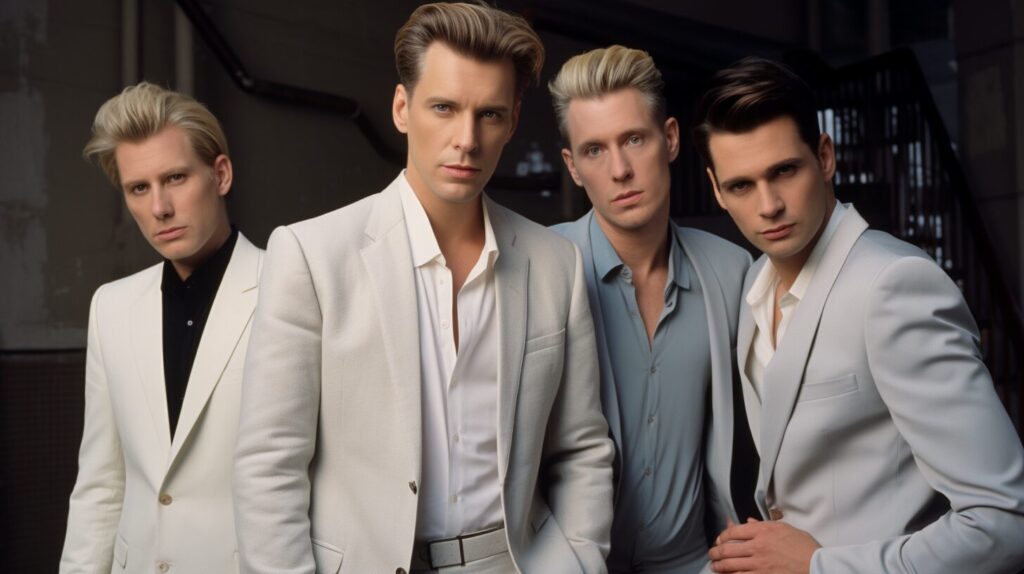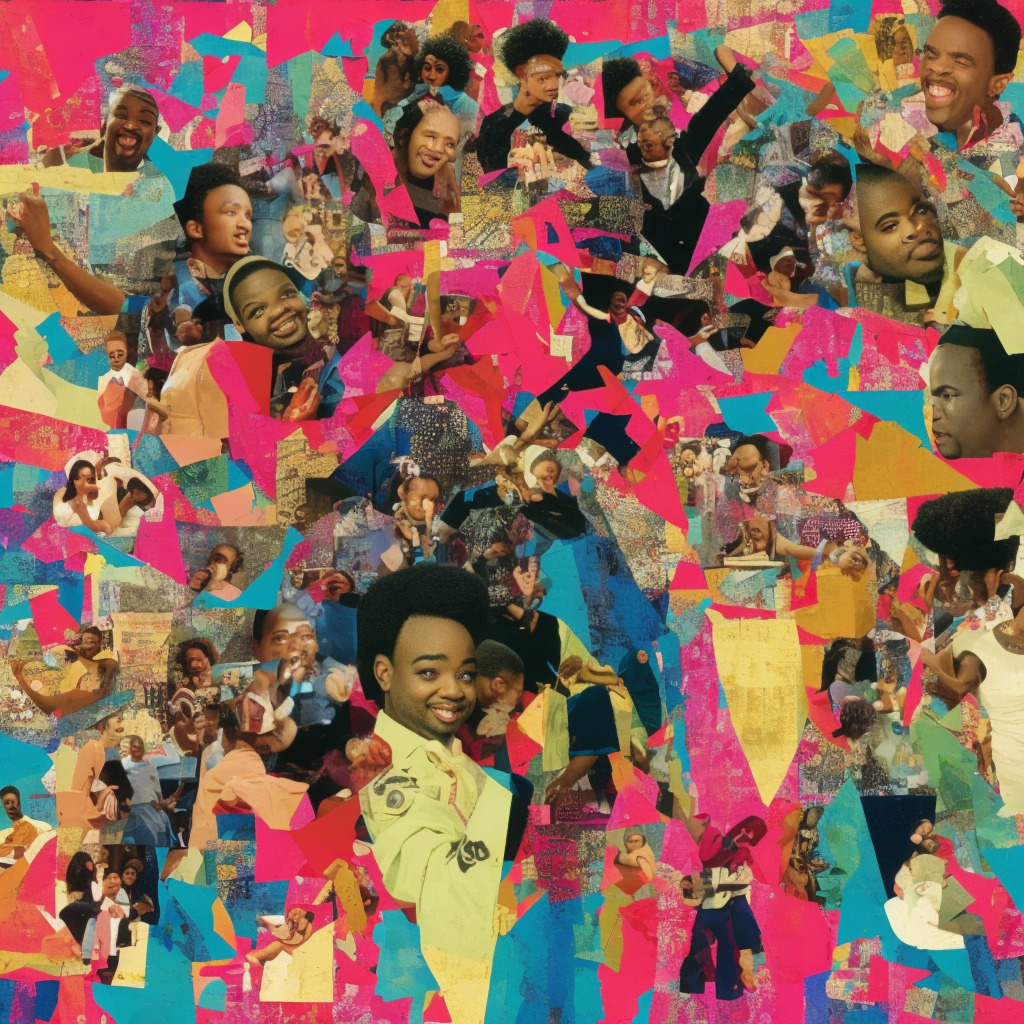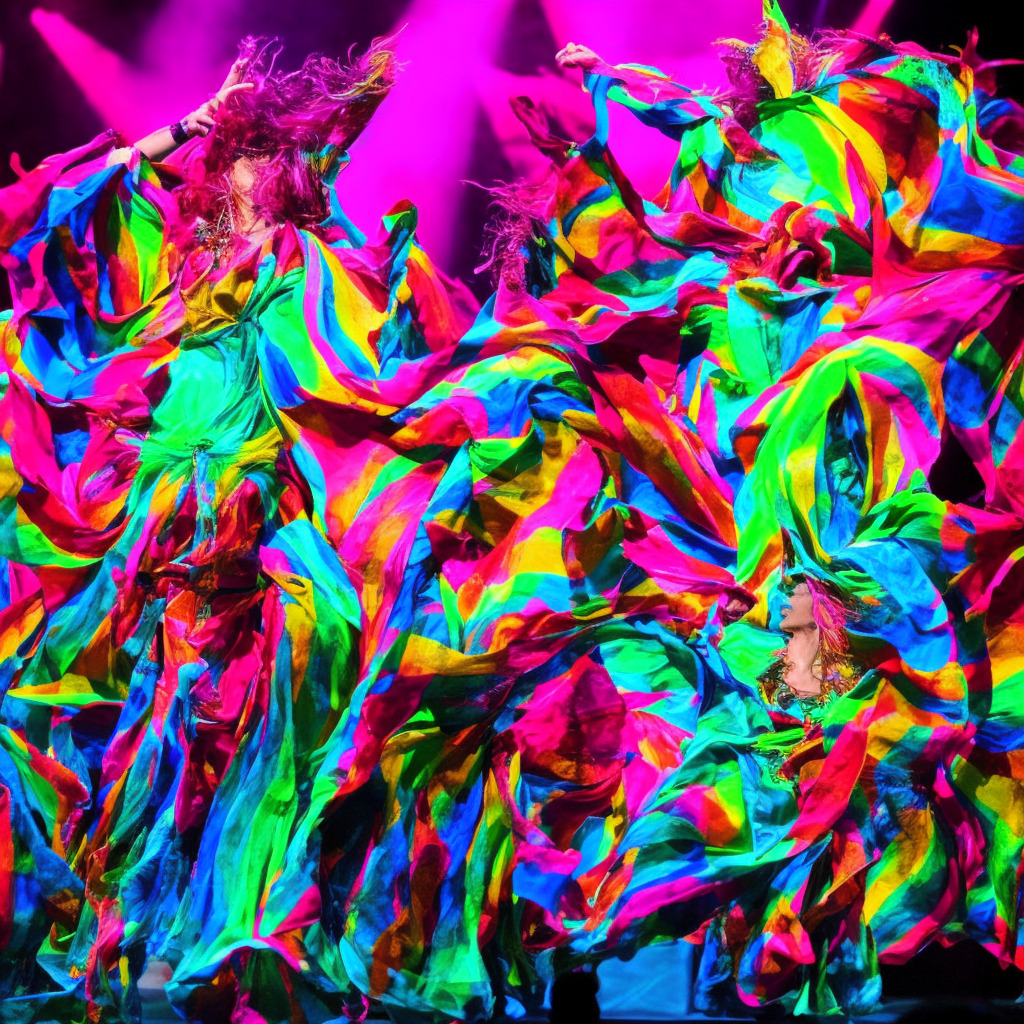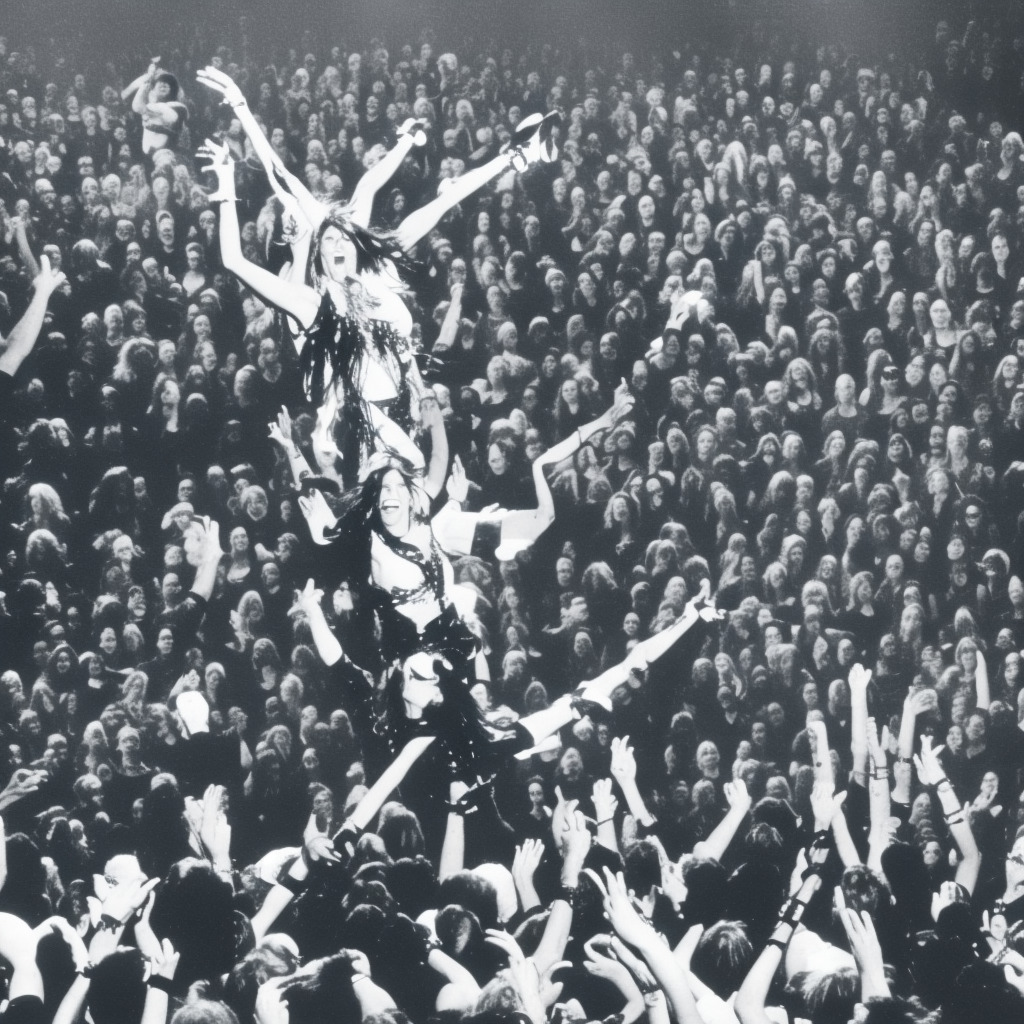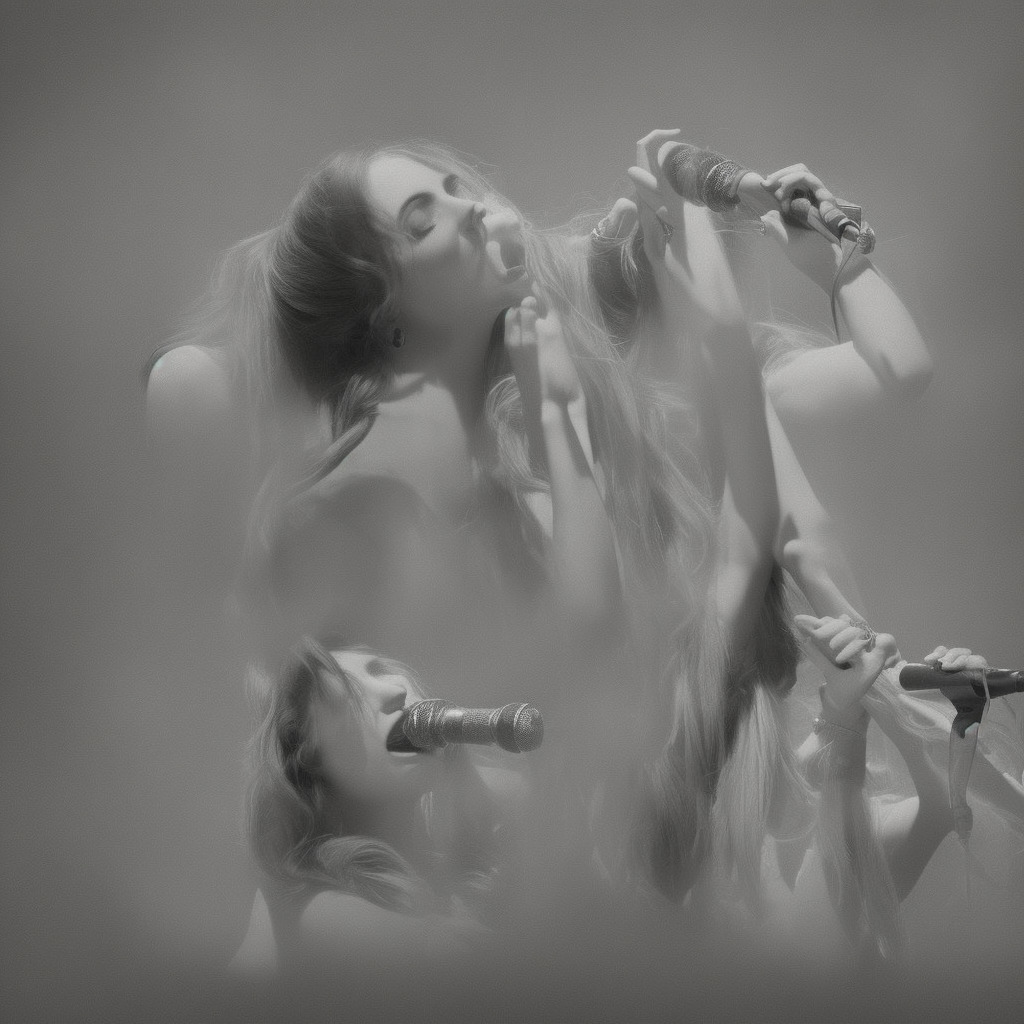In the grand tapestry of 80s music, where synthesizers and bold fashion statements reigned supreme, one song stands out for its heartrending simplicity and soulful depth: “True” by Spandau Ballet. As we embark on a journey through the creative landscape that birthed this iconic track, we delve into the elements that make “True” not just a song, but a timeless ode to authenticity and love.
The Genesis of a Classic
The inception of “True” is a tale of artistic inspiration and personal sentiment, woven by the band’s guitarist and chief songwriter, Gary Kemp. Drawing from a rich palette of soul influences, notably Marvin Gaye and Al Green, Kemp sought to craft a blue-eyed soul anthem that spoke directly to the heart. But “True” was more than an homage to his musical heroes; it was a vulnerable confession of Kemp’s unspoken feelings for Clare Grogan of Altered Images. The song’s lyrics, brimming with poetic ambiguity and emotional candor, reflect a struggle to articulate love’s true essence, a theme that resonates deeply with anyone who’s ever been lost for words in the throes of passion.
A Melodic Confluence
Musically, “True” is a seamless blend of influences and Kemp’s own creative innovations. The song’s hallmark, the memorable “huh huh huh hu-uh huh” line, owes its existence to an unexpected muse – The Beatles’ “Dig a Pony,” witnessed by Kemp in the documentary *Let It Be*. This, coupled with the direct nod to Marvin Gaye in the lyrics, and a chorus inspired by Al Green’s “Let’s Stay Together,” showcases Kemp’s ability to meld diverse inspirations into a cohesive and strikingly original composition.
A Legacy Unfolding
As we explore the layers and legacies of “True,” we find a song that transcends its era. It’s a testament to the power of love, the challenge of artistic expression, and the enduring allure of soulful music. Join us as we unravel the intricate tapestry of emotions, influences, and melodies that make “True” by Spandau Ballet a veritable masterpiece of the 1980s and beyond.
Climaxing the New Romantic Era: An Insight Into Spandau Ballet’s Rise through ‘True’
Navigating through the diverse music landscape of the 80s, Spandau Ballet, led by the creative prowess of the Kemp brothers, carved a distinct space in the New Romantic era of British pop. Their emblematic album “True”, lauded for Gary Kemp’s songwriting genius, not only skyrocketed them to unprecedented fame, but also earned a spot as one of the most-played songs in US history. Embark on a journey to relive the peak of Spandau Ballet’s career, marked by their technical excellence and noteworthy participation in the original Band Aid lineup.
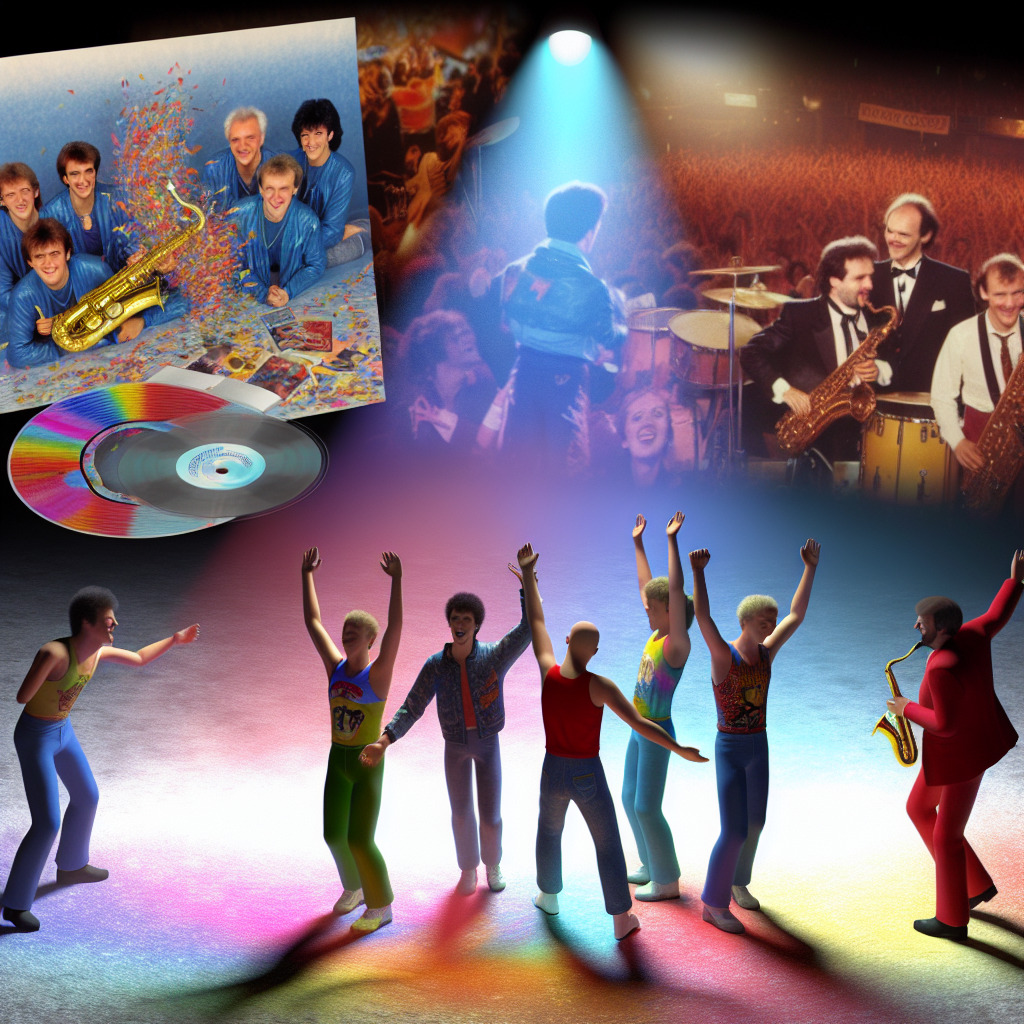 Emerging from London’s post-punk underground dance scene, Spandau Ballet burst into the 1980s as a successful group of the New Romantic era of British pop. Their musical journey, heavily influenced by genres ranging from punk rock to soul, was marked by the creative powerhouse that was the Kemp brothers, with Gary Kemp’s songwriting prowess shaping their unique sound. The group’s distinctive lineup was completed by vocalist Tony Hadley, saxophonist Steve Norman, drummer John Keeble, and Martin Kemp on bass.
Emerging from London’s post-punk underground dance scene, Spandau Ballet burst into the 1980s as a successful group of the New Romantic era of British pop. Their musical journey, heavily influenced by genres ranging from punk rock to soul, was marked by the creative powerhouse that was the Kemp brothers, with Gary Kemp’s songwriting prowess shaping their unique sound. The group’s distinctive lineup was completed by vocalist Tony Hadley, saxophonist Steve Norman, drummer John Keeble, and Martin Kemp on bass.
One of the most significant moments in Spandau Ballet’s career was the release of the album “True” in 1983. The title track, also called “True”, is a testament to Gary Kemp’s songwriting abilities and it catapulted the band to new heights of fame. The song reached No. 1 in the UK and the top 5 in the US, gaining such popularity that it earned a BMI award in 2011 as one of the most-played songs in US history with four million airplays.
The era around the release of “True” saw Spandau Ballet at their peak. The band’s success was recognized in 1984 when they received a Brit Award for technical excellence. They also had the honour of being the first act approached by Bob Geldof to join the original Band Aid lineup. Whether you’re a long-time fan or just discovering Spandau Ballet, the release of “True” and the period surrounding it represents a pivotal time in their history, showcasing the band’s immense talent and contribution to music.
Charting the Enduring Influence of a Timeless Classic
“True” by Spandau Ballet is more than just a song; it’s an enduring legacy. Inspiring renditions from artists like Paul Anka, being a charming part of iconic films and series like “Sixteen Candles”, “50 First Dates”, and “Modern Family”, and influencing chart-topping hits like P.M. Dawn’s “Set Adrift on Memory Bliss”, “True” stands as a testament to timeless appeal and significant influence in the music landscape.
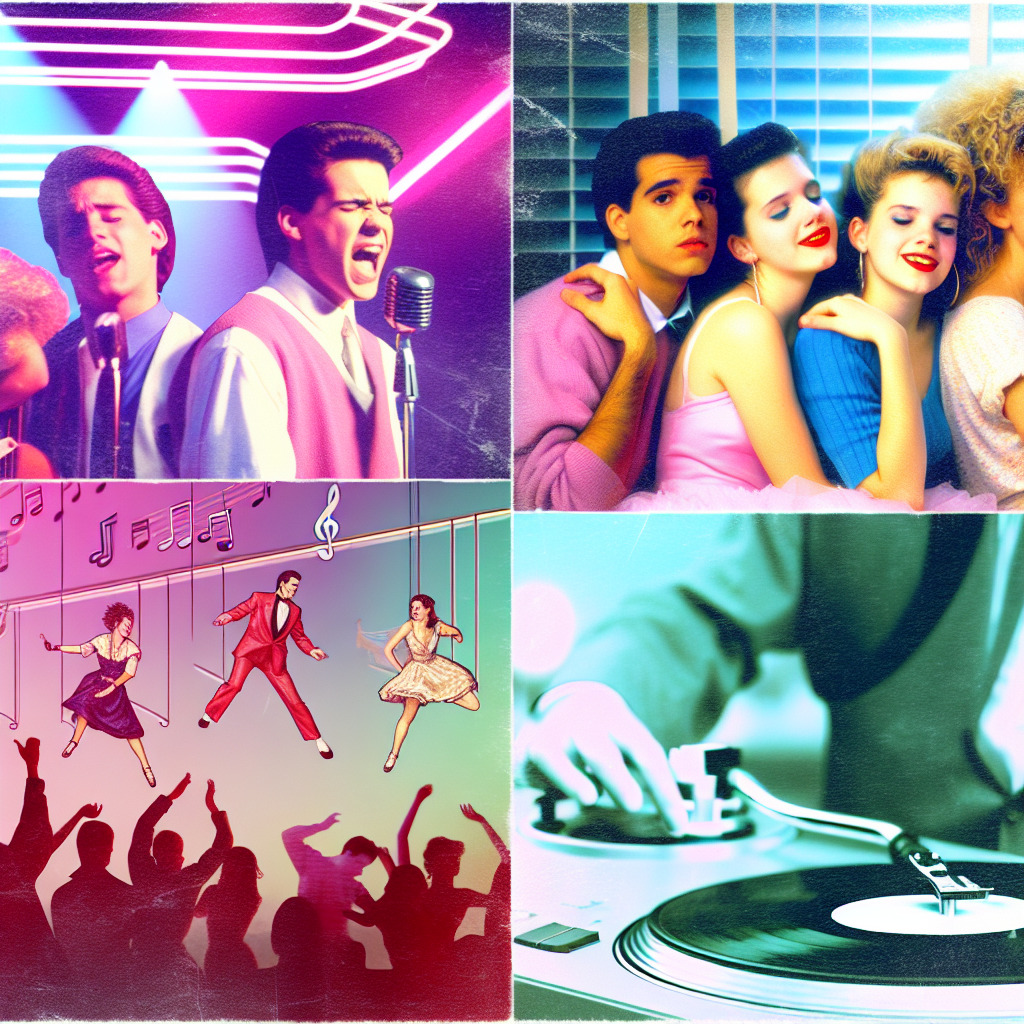 The remarkable impact of “True” has extended beyond the realm of Spandau Ballet’s discography. The song’s melodious charm and heartfelt lyrics have inspired other artists to interpret and infuse their unique styles into it. Notably, Paul Anka, the renowned swing artist, crafted his own swing-style rendition of “True”, adding his unique flair to the timeless classic.
The remarkable impact of “True” has extended beyond the realm of Spandau Ballet’s discography. The song’s melodious charm and heartfelt lyrics have inspired other artists to interpret and infuse their unique styles into it. Notably, Paul Anka, the renowned swing artist, crafted his own swing-style rendition of “True”, adding his unique flair to the timeless classic.
It’s not just the music world that has been captivated by the song’s allure. The film and television industries have also recognized the emotional resonance of “True”. The song found its way into the soundtracks of popular films like “Sixteen Candles” and “50 First Dates”, enhancing the cinematic moments with its nostalgic appeal. It has also been featured in widely viewed TV series like “Modern Family”, resonating with audiences of all ages.
Moreover, the influence of “True” has echoed in the songs of other artists. The most notable instance is perhaps P.M. Dawn’s chart-topping hit “Set Adrift on Memory Bliss” in 1991, which sampled “True” to create a fresh and innovative soundscape. The enduring presence of “True” in various forms of media and its continued reinterpretation by different artists reflect the song’s timeless appeal and its significant contribution to the music landscape.
Decades of Influence: A Cinematic Journey through Spandau Ballet’s Distinctive Artistry
“True” by Spandau Ballet – an iconic 80s music video with a potent visual narrative that supplements its haunting melody. Mirroring the song’s exploration of love and authenticity, the video offers a nostalgic peek into the era’s aesthetics that helped shape the band’s unique style and solidify their place in pop culture. Its timeless appeal has transcended decades, encapsulating the vibrant spirit of the 80s and continuing to resonate with audiences today.
 The music video for “True”, just like the song, is a classic piece of 80s nostalgia. The video, embedded with a simple yet effective visual narrative, perfectly complements the song’s haunting and melancholic melody. It serves as a visual aid in the poetic exploration of love, memory, and personal truths, reflecting the song’s quest for authenticity in love and life. The band members, with their charismatic screen-presence, bring the lyrics to life, weaving a story of emotional resonance that is felt even without the accompanying music.
The music video for “True”, just like the song, is a classic piece of 80s nostalgia. The video, embedded with a simple yet effective visual narrative, perfectly complements the song’s haunting and melancholic melody. It serves as a visual aid in the poetic exploration of love, memory, and personal truths, reflecting the song’s quest for authenticity in love and life. The band members, with their charismatic screen-presence, bring the lyrics to life, weaving a story of emotional resonance that is felt even without the accompanying music.
The video’s production, very true to the vibrant and pulsating era of the 80s, is a glimpse into the fashion and aesthetics of the time, which undoubtedly contributed to the song’s popularity. Furthermore, the video’s themes and visuals played a vital role in defining Spandau Ballet’s image and musical style, marking them as one of the defining bands of the 1980s.
The video’s reception was as warm as the song’s. It was a crucial factor in the band bouncing back stronger than ever, helping to define the new pop of the 80s. With its enduring popularity, the video has found its way beyond its original release, even featuring in a 2015 movie “Pixels”, further testament to its timeless appeal and significant contribution to the pop culture landscape.
A Cultural Phenomenon: The Transformative Impact of Spandau Ballet’s Sonic Evolution
Embracing a soulful sound, Spandau Ballet’s 1983 track “True” marked a pivotal shift in their career, earning a top spot on the UK charts and a place in the Billboard Hot 100. More than a commercial success, the song became a cultural phenomenon, covered by numerous artists, sampled in chart-topping hits, and featured in films and TV series. The timeless appeal of “True” not only affirms Spandau Ballet’s creative genius but also their transformative impact on the music landscape.
 Released in April 1983, “True” marked a pivotal moment in Spandau Ballet’s career, seeing the band evolving from their punk and rock roots to embrace a more soulful sound, heavily influenced by the likes of Marvin Gaye and Al Green. This sonic shift was largely driven by the introduction of the saxophone by band member Steve Norman and songwriter Gary Kemp’s exploration into soul music. The song hit the top spot on the UK charts, breached the top 10 in several other countries, and earned the band their first entry into the Billboard Hot 100. The track was such a sensation that it nudged aside “Communication”, the album’s first single, which was already ascending the UK charts.
Released in April 1983, “True” marked a pivotal moment in Spandau Ballet’s career, seeing the band evolving from their punk and rock roots to embrace a more soulful sound, heavily influenced by the likes of Marvin Gaye and Al Green. This sonic shift was largely driven by the introduction of the saxophone by band member Steve Norman and songwriter Gary Kemp’s exploration into soul music. The song hit the top spot on the UK charts, breached the top 10 in several other countries, and earned the band their first entry into the Billboard Hot 100. The track was such a sensation that it nudged aside “Communication”, the album’s first single, which was already ascending the UK charts.
“True” wasn’t just a commercial triumph; it etched a lasting impression on the music industry and pop culture. The song was covered by other artists, most notably Paul Anka, who imparted a swing style to the timeless classic. Further, it was sampled by other musicians to create their hits, most notably P.M. Dawn’s chart-topping hit “Set Adrift on Memory Bliss”. The song’s influence spilled over into the realm of films and TV series, featuring in popular productions like “Sixteen Candles”, “50 First Dates”, and “Modern Family”, thereby widening its audience and bolstering its popularity.
The lasting popularity of “True” is a testament to its timeless appeal and its transformative impact on Spandau Ballet’s career and popular music at large. As such, it’s not merely a song but a cultural phenomenon that resonates with people across generations, transcending temporal and geographical boundaries. Its enduring success affirms the creative genius of Spandau Ballet and their unique contribution to the music landscape.
Huh huh huh hu-uh huh
So true, funny how it seems
Always in time, but never in line for dreams
Head over heels when toe to toe
This is the sound of my soul
This is the sound
I bought a ticket to the world
But now I’ve come back again
Why do I find it hard to write the next line?
Oh I want the truth to be said
Huh huh huh hu-uh huh
I know this much is true
Huh huh huh hu-uh huh
I know this much is true
With a thrill in my head and a pill on my tongue
Dissolve the nerves that have just begun
Listening to Marvin (all night long)
This is the sound of my soul
This is the sound
Always slipping from my hands
Sand’s a time of its own
Take your seaside arms and write the next line
Oh I want the truth to be known
Huh huh huh hu-uh huh
I know this much is true
Huh huh huh hu-uh huh
I know this much is true
I bought a ticket to the world
But now I’ve come back again
Why do I find it hard to write the next line?
Oh I want the truth to be said
Huh huh huh hu-uh huh
I know this much is true
Huh huh huh hu-uh huh
I know this much is true
This much is true
This much is true
This much is true
I know, I know, I know this much is true
This much is true
This much is true (huh huh)
This much is true
This much is true
I know this much is true
This much is true (huh huh)
This much is true (I know this much is true)
This much is true (huh huh)
This much is true (I know this much is true)
I know, I know, I know this much is true
Unraveling the Layers of Love and Expression
An in-depth exploration of Spandau Ballet’s ‘True’, unraveling the complexities of love, authenticity, and the struggle to articulate deep emotions.
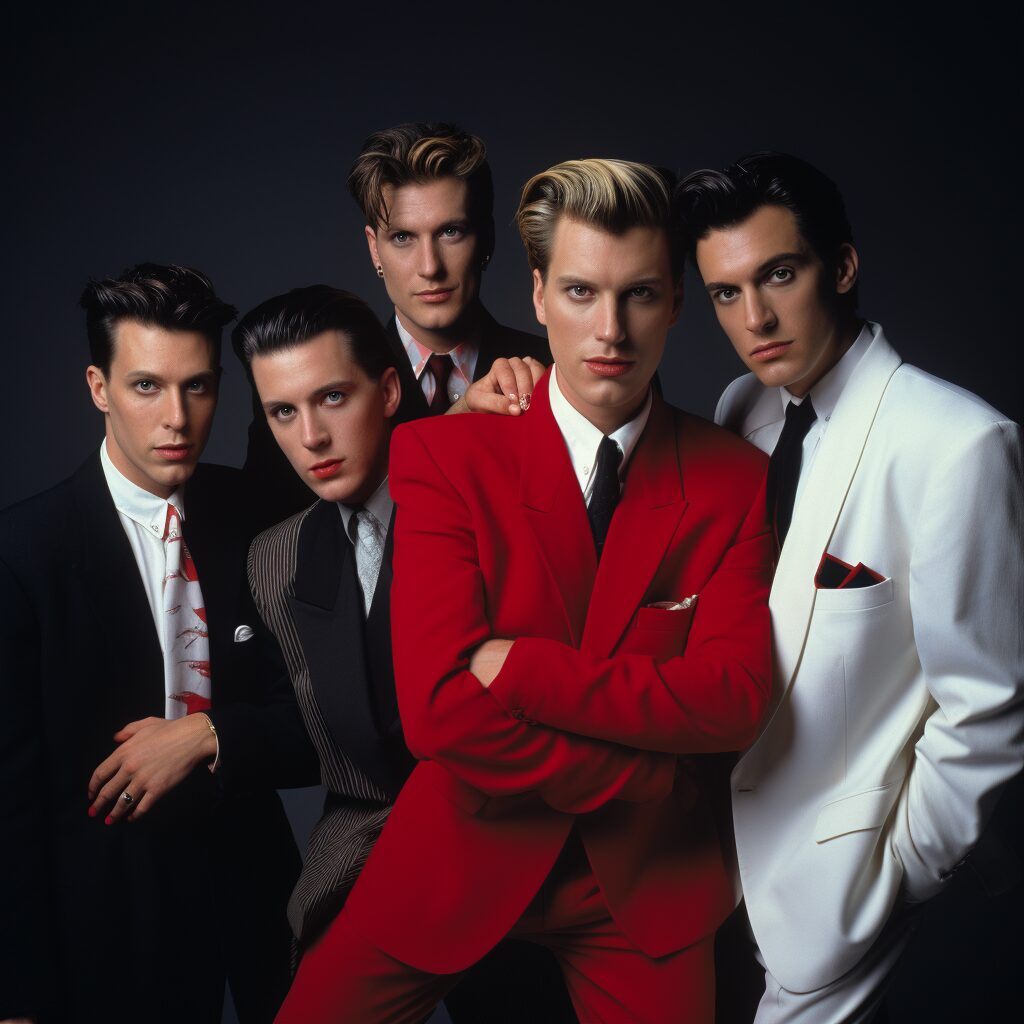 Spandau Ballet’s “True” is not just a song; it’s a lyrical journey that navigates the complexities of expressing genuine emotions. At its core, the song is a poetic exploration of love, memories, and the quest for authenticity in conveying one’s feelings. The struggle to articulate emotions, a theme that resonates with many, is beautifully encapsulated in the song’s narrative.
Spandau Ballet’s “True” is not just a song; it’s a lyrical journey that navigates the complexities of expressing genuine emotions. At its core, the song is a poetic exploration of love, memories, and the quest for authenticity in conveying one’s feelings. The struggle to articulate emotions, a theme that resonates with many, is beautifully encapsulated in the song’s narrative.
“True” finds its muse in Gary Kemp’s platonic relationship with Clare Grogan and his admiration for literary works, particularly Nabokov’s “Lolita”. The lyrics, rich with metaphorical language, subtly reference this friendship and the influence of literature, painting a vivid picture of Kemp’s emotional landscape. The song’s narrative weaves through the challenges of penning a love song, reflecting a meta-commentary on the creative process itself.
The song’s soulful undertone pays homage to the legendary Marvin Gaye, reflecting Kemp’s attempt to channel the emotional depth characteristic of Gaye’s music. This influence is not just a tribute but a thread that connects “True” to a broader tapestry of soul and pop music, enriching its lyrical and emotional depth.
“True” masterfully plays with language to convey the intensity of feelings. Phrases like “head over heels when toe to toe” encapsulate the exhilarating yet confrontational aspects of love, highlighting the song’s ability to capture the nuanced dynamics of romantic relationships. The introspective “This is the sound of my soul” and the reflective “I bought a ticket to the world” further delve into the introspective journey of understanding and expressing love.
At its heart, “True” is a narrative of seeking truth in expression. The recurring motif of struggling to “write the next line” underscores the universal challenge of articulating genuine emotions. This theme of search and realization is a poignant reminder of the song’s underlying message: the most profound truths are often the hardest to express.
Beyond its personal narrative, “True” encapsulates the zeitgeist of the 1980s, reflecting the era’s introspection and quest for authenticity against a backdrop of excess. The song’s timeless appeal lies in its ability to resonate with listeners across generations, serving as a reminder of the enduring power of genuine emotional expression.
Soulful Transformation: Spandau Ballet’s Artistic Leap with ‘True’
Spandau Ballet’s “True”, crafted by guitarist Gary Kemp, is a unique fusion of soul and New Wave, marked by its synth-pop elements and compelling saxophone melodies. Recorded in the Bahamas, this shift in musical direction is evident in the emotional depth and rich melody of the song. Standing out in the band’s discography, “True” signaled a more mature, soulful phase in Spandau Ballet’s journey, solidifying it as a defining moment in their career and eventually becoming their signature hit.
 “True,” written by the band’s guitarist and songwriter Gary Kemp, marked a significant shift in Spandau Ballet’s musical direction. Influenced by the sounds of Marvin Gaye and Al Green, Kemp infused soul elements into the band’s typical New Wave and synth-pop sound, leading to a unique blend that defined the song. The soulful inclinations of “True” were further characterized by Steve Norman’s newfound interest in the saxophone, providing a melodic hook that complemented Tony Hadley’s powerful vocals. This distinctive sound was born in Compass Point Studios in the Bahamas, a change of recording scenery that influenced the overall feel of the song.
“True,” written by the band’s guitarist and songwriter Gary Kemp, marked a significant shift in Spandau Ballet’s musical direction. Influenced by the sounds of Marvin Gaye and Al Green, Kemp infused soul elements into the band’s typical New Wave and synth-pop sound, leading to a unique blend that defined the song. The soulful inclinations of “True” were further characterized by Steve Norman’s newfound interest in the saxophone, providing a melodic hook that complemented Tony Hadley’s powerful vocals. This distinctive sound was born in Compass Point Studios in the Bahamas, a change of recording scenery that influenced the overall feel of the song.
“True” is structured around a rich melody, maintained by a slow tempo and smooth rhythm. The harmony, although simple, allows the melody and lyrics to take center stage, lending an emotional depth to the song. This composition, coupled with the soulful chord progression and the dominant saxophone, results in a memorable tune that still resonates with listeners decades later.
Comparatively, “True” stands out in Spandau Ballet’s discography for its matured musical approach. Leading up to the release of “True,” the band primarily explored the synth-pop sound, notably in tracks like “To Cut A Long Story Short.” However, with “True” and subsequent releases like “Gold,” Spandau Ballet embraced a more soulful style, showcasing their musical growth and versatility. This evolution became a significant milestone in their artistic journey, further solidifying “True” as a defining moment in their career. The band’s strategic release of the “True” album, as “Communication” was climbing the UK Singles Chart, and their revamped look for the song’s music video and tour, signaled their transition into a more sophisticated phase. The DJs’ enthusiasm for the title track was a testament to its potential success, eventually making “True” Spandau Ballet’s signature hit.
Charting a New Course: Gary Kemp’s Creative Impact on Spandau Ballet
Gary Kemp, the power behind Spandau Ballet’s distinctive sound and responsible for their hit singles, including “True”, is celebrated as a musical genius. His eclectic influences and innovative composition techniques led the band to global fame, with over 25 million record sales. Kemp’s exploration into soul music and his creative synergy with his brother Martin, reshaped the band’s sound and left a lasting legacy in the music world. Winner of the Ivor Novello Award for Outstanding Song Collection, Kemp’s contribution to the music industry is undeniably remarkable.
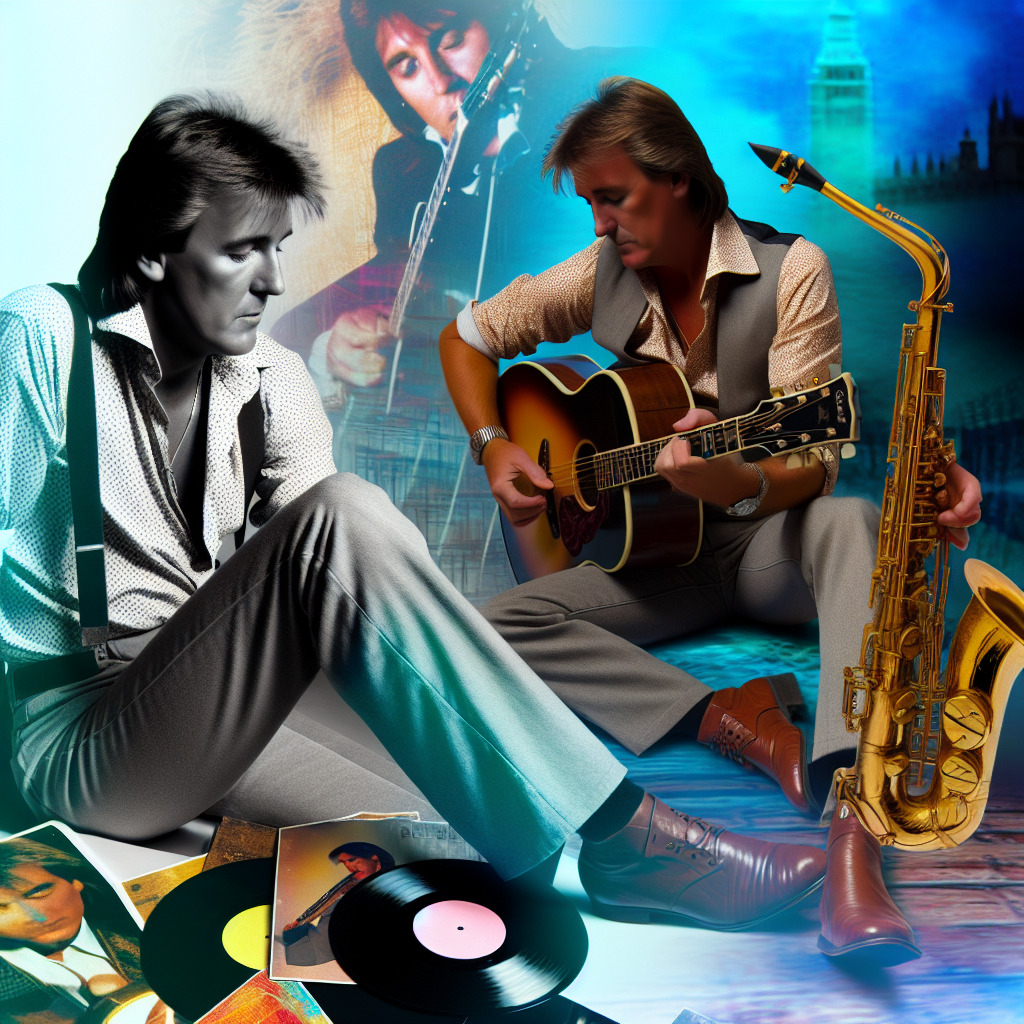 Gary Kemp is known as the heartbeat behind Spandau Ballet’s unique sound, serving as the lead guitarist, backing vocalist, and principal songwriter for the band. Born on October 16, 1959, Kemp’s passion for music, fueled by his English upbringing, led to the creation of some of the most memorable tracks in British pop music history. He wrote the lyrics and music for all 23 of Spandau Ballet’s hit singles, including “True”. The band’s journey in the 1980s, under Kemp’s musical guidance, resulted in over 25 million record sales worldwide. In 2012, Kemp’s contribution to the music world was recognized when he won the Ivor Novello Award for Outstanding Song Collection.
Gary Kemp is known as the heartbeat behind Spandau Ballet’s unique sound, serving as the lead guitarist, backing vocalist, and principal songwriter for the band. Born on October 16, 1959, Kemp’s passion for music, fueled by his English upbringing, led to the creation of some of the most memorable tracks in British pop music history. He wrote the lyrics and music for all 23 of Spandau Ballet’s hit singles, including “True”. The band’s journey in the 1980s, under Kemp’s musical guidance, resulted in over 25 million record sales worldwide. In 2012, Kemp’s contribution to the music world was recognized when he won the Ivor Novello Award for Outstanding Song Collection.
Kemp’s musical style was heavily influenced by different genres and artists. The soulful elements in “True” were inspired by the likes of Marvin Gaye and Al Green. This unique blend of soul and New Wave was a significant shift in Spandau Ballet’s musical direction, leading to a sound that defined the band. The introduction of the saxophone and Kemp’s exploration into soul music played a crucial role in shaping the song’s feel. This distinctive sound was instrumental in making “True” a timeless classic.
Gary Kemp’s role in the creation of “True” was pivotal to the success of the song. His contribution extended beyond just writing the song. His innovative composition techniques, the soulful chord progression, and his signature touches were the key elements that made “True” stand out in Spandau Ballet’s discography. Moreover, Kemp’s work on the song was well received by critics and peers, earning him accolades and solidifying his legacy in the music industry. Interestingly, Gary Kemp also worked closely with his brother Martin Kemp, who played the bass guitar for the band. This collaboration added a unique dimension to the band’s music, with the brothers’ creative synergy reflected in the songs they created together.
The Timeless Odyssey: Spandau Ballet’s ‘True’
‘True’ by Spandau Ballet remains a landmark in the annals of pop music, an album that transcended its era to become a timeless classic.
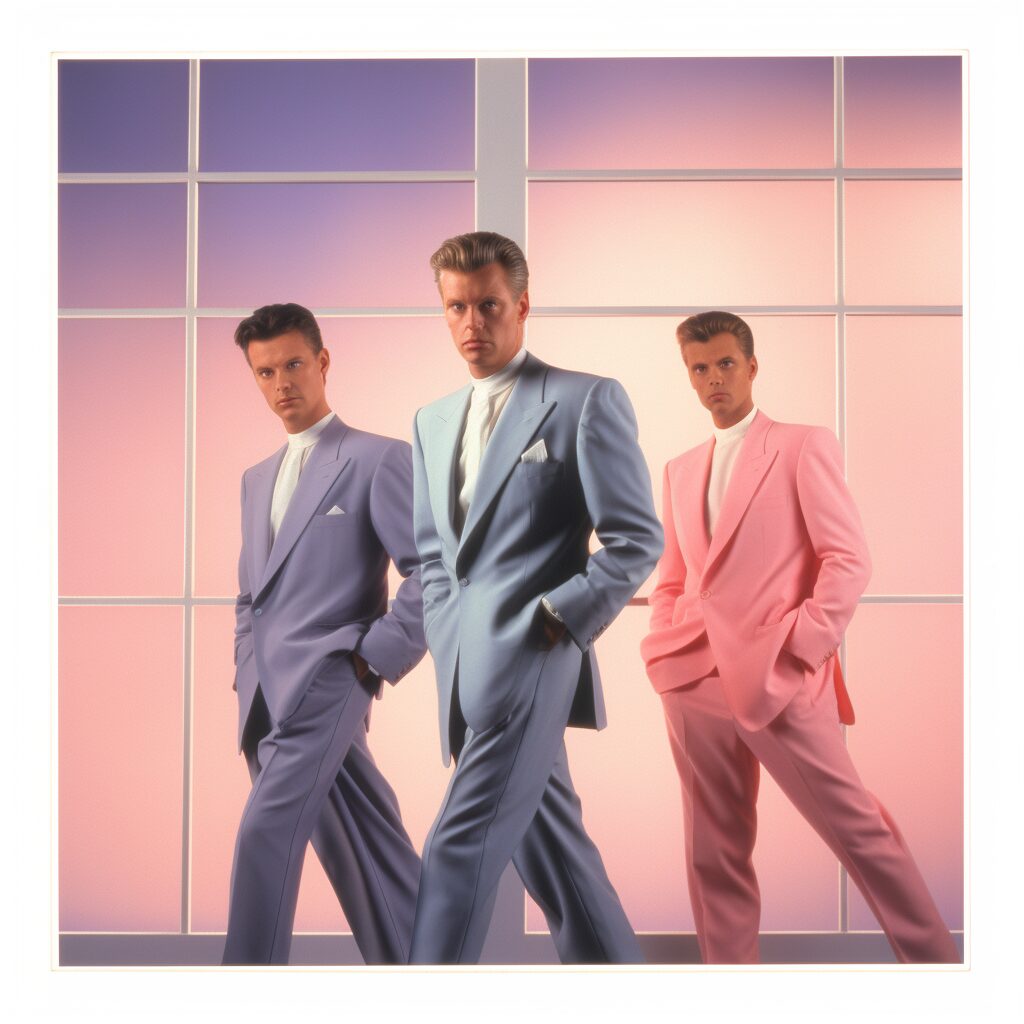 In the crucible of the early 80s music scene, Spandau Ballet sought to transcend the New Romantic label, embarking on a journey that would etch their name into the annals of pop music history. Their third studio endeavor, ‘True,’ emerged not merely as an album but as a cultural beacon, signaling a pivotal shift in the band’s musical direction. The genesis of ‘True’ was a tale of evolution, from the initial collaboration with Trevor Horn to the ultimate partnership with the dynamic duo of Tony Swain and Steve Jolley. This fusion of creative minds propelled Spandau Ballet into the realms of pop and soul, a daring leap from their dance music roots.
In the crucible of the early 80s music scene, Spandau Ballet sought to transcend the New Romantic label, embarking on a journey that would etch their name into the annals of pop music history. Their third studio endeavor, ‘True,’ emerged not merely as an album but as a cultural beacon, signaling a pivotal shift in the band’s musical direction. The genesis of ‘True’ was a tale of evolution, from the initial collaboration with Trevor Horn to the ultimate partnership with the dynamic duo of Tony Swain and Steve Jolley. This fusion of creative minds propelled Spandau Ballet into the realms of pop and soul, a daring leap from their dance music roots.
The album’s inception was as picturesque as it was profound, with the Bahamas’ Compass Point Studios serving as the backdrop for this musical metamorphosis. This choice of location wasn’t mere happenstance; it was a deliberate effort to imbue the album with the soulful essence that had influenced Gary Kemp, the band’s primary songwriter. The tropical ambiance of the Bahamas intertwined with the rich heritage of soul music recorded at Compass Point, setting the stage for what would become a timeless masterpiece.
Upon its release, ‘True’ was met with acclaim, marking a high point in Spandau Ballet’s career. Critics and fans alike lauded the album for its cohesive sound and emotive depth, a departure from the band’s earlier, more eclectic works. The album’s influence extended beyond the charts, inspiring a generation of musicians and leaving an indelible mark on the landscape of 80s pop music.
The visual representation of ‘True’ was as meticulously crafted as its music. Competing for attention and influenced by personal connections, the album’s artwork was designed to reflect the band’s aesthetic evolution. The cover art, steeped in the romanticism and sophistication of the era, served as a visual counterpart to the album’s sonic landscape, inviting listeners into the world of Spandau Ballet.
The Timeless Truth of ‘True’
Spandau Ballet’s ‘True’ transcends time with its soulful introspection and romantic vulnerability, weaving a narrative of love and connection that resonates universally.
In the symphonic tapestry of Spandau Ballet’s discography, ‘True’ emerges not merely as a song but as an anthem that transcends the boundaries of time and genre. Its lyrical profundity and melodic elegance encapsulate a narrative that is as universal as it is personal—the quest for genuine connection and the articulation of heartfelt emotion. This masterpiece, woven with threads of soulful introspection and romantic vulnerability, invites listeners into a realm where love’s complexities are laid bare against the backdrop of an ever-changing world.
At its core, ‘True’ is an odyssey of emotional exploration, where the nuances of love and longing are explored with poetic grace. The song’s narrative arc, inspired by Gary Kemp’s musings and personal experiences, resonates with the universal human experience of seeking and, sometimes, struggling to express the deepest of affections. Its lyrics serve as a mirror reflecting the multifaceted nature of love, from the exhilaration of connection to the introspection that accompanies unvoiced desires.
Musically, ‘True’ stands as a beacon of blue-eyed soul, imbued with the influences of legendary artists like Marvin Gaye and Al Green. These influences are seamlessly integrated, creating a sound that is both nostalgic and refreshingly original. The iconic ‘huh huh huh’ vocal line, a subtle nod to the Beatles, exemplifies the song’s ability to borrow from the past while forging its own distinct identity. This melodic ingenuity, coupled with the song’s introspective lyrics, crafts an experience that is both deeply personal and universally relatable.
The song’s enduring appeal is testament to its ability to resonate across generations, serving as a cultural touchstone that captures the essence of an era while speaking to timeless themes of love, truth, and the human condition. Its presence in popular culture, from films to weddings, underscores its status as a perennial favorite, a song that continues to touch hearts and inspire artists worldwide.
In conclusion, ‘True’ by Spandau Ballet is more than just a hit song from the 80s; it is a lyrical and musical journey that continues to enchant and inspire. Its legacy lies not only in its chart success but in its capacity to evoke emotion, to connect with listeners on a deeply personal level, and to remind us of the enduring power of true, heartfelt expression. As we reflect on the impact and significance of ‘True,’ we are reminded of the song’s ultimate message: in a world of fleeting moments and shifting sands, the truth of our emotions, the sincerity of our connections, remains the most enduring melody of all.
Spandau Ballet’s ‘True’- a timeless classic that transcended boundaries, genres and decades! From 🎧 to 🎬, it’s been the heartbeat of a generation. From punk rock roots to soulful sounds, it’s more than a song, it’s a cultural phenomenon! 🎵 #SpandauBallet #True

